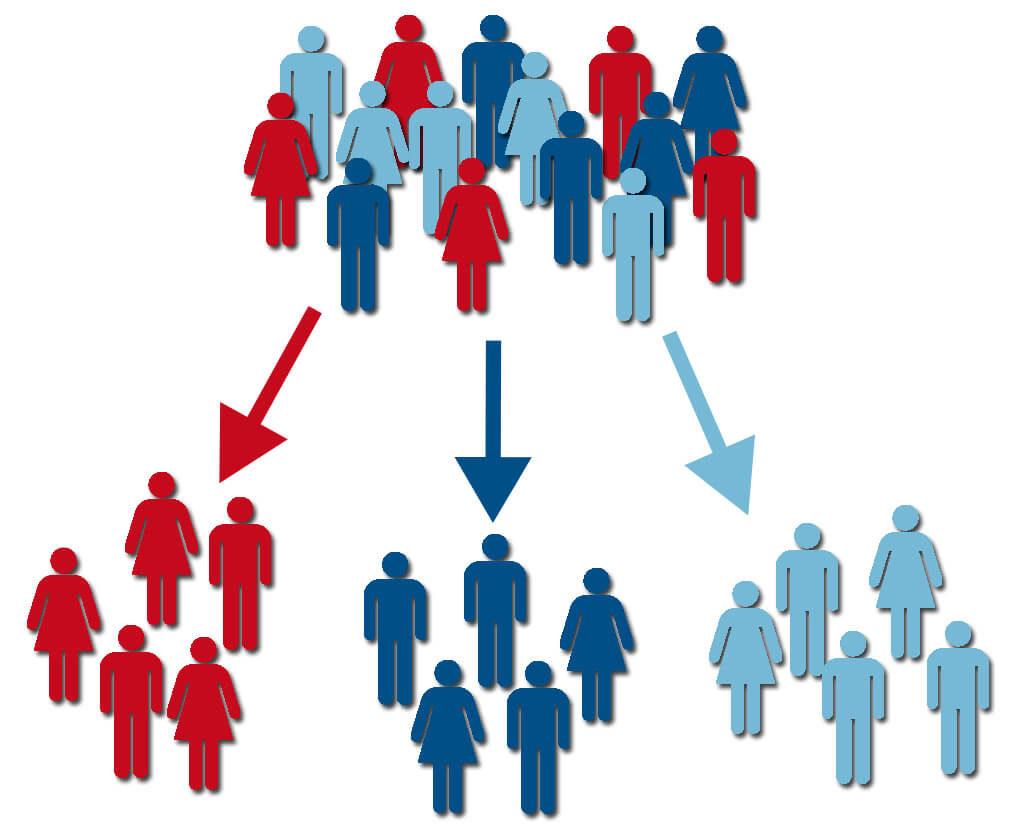In today’s rapidly evolving media landscape, audience segmentation has become a fundamental strategy for media professionals seeking to engage their target audiences effectively. Gone are the days of one-size-fits-all content distribution; instead, media outlets employ advanced techniques to divide their audiences into smaller, more specific groups based on shared characteristics, interests, and behaviors. In this blog post, we’ll delve into the concept of audience segmentation in media, exploring its importance, benefits, and practical applications.
Understanding Audience Segmentation In Media

Audience segmentation involves dividing a larger audience into smaller, more homogenous groups, known as segments or cohorts, based on shared traits. These traits can include demographics (age, gender, income), psychographics (values, interests, lifestyle), behaviors (purchase history, content consumption), or a combination of these factors. The ultimate goal is to tailor content, marketing efforts, and messaging to each segment, enhancing engagement and relevance.
The Importance of Audience Segmentation
- Enhanced Relevance: By understanding the unique characteristics and preferences of each audience segment, media professionals can create content that resonates with them on a deeper level. This leads to higher engagement rates and improved brand loyalty.
- Increased ROI: Targeting specific segments allows media organizations to allocate their resources more efficiently. Instead of casting a wide net and hoping to catch some fish, they can focus their efforts on segments most likely to convert, thus maximizing their return on investment.
- Improved Personalization: In an era where consumers expect personalized experiences, audience segmentation enables media outlets to deliver content and advertisements that feel tailor-made for each individual. This personal touch can significantly boost engagement and conversion rates.
Practical Applications of Audience Segmentation in Media
- Content Creation: Media organizations use audience insights to develop content that aligns with the interests and preferences of specific segments. For example, a fashion magazine might create different content for segments interested in high-end luxury fashion and eco-friendly fashion.
- Advertising and Marketing: Advertisers can target specific audience segments with precision, ensuring that their messages reach those most likely to respond positively. This not only saves money but also increases the chances of a successful campaign.
- Product Development: Media companies often diversify their offerings based on audience segments’ needs and preferences. For instance, a streaming service might introduce specialized content categories catering to different viewer tastes.
- Audience Engagement: By monitoring audience behavior and feedback, media outlets can refine their strategies and continually adapt to their audience’s evolving preferences. This ongoing engagement can foster a loyal audience base.
Challenges and Considerations
While audience segmentation offers numerous benefits, it’s not without its challenges:
- Data Privacy and Ethics: Collecting and using audience data comes with ethical considerations and the need to comply with data privacy regulations.
- Data Accuracy: The quality of data used for segmentation is crucial. Inaccurate or outdated data can lead to ineffective targeting.
- Oversegmentation: Dividing the audience into too many segments can be overwhelming and counterproductive. Striking the right balance is essential.
- Segment Evolution: Audience segments can evolve, requiring constant monitoring and adjustment of strategies.
Conclusion
Audience segmentation is a powerful tool that allows media professionals to engage their audiences more effectively, create personalized experiences, and maximize their ROI. In an era of information overload and intense competition for attention, understanding and catering to the unique needs and preferences of distinct audience segments is a luxury and a necessity for media outlets looking to thrive in the digital age.
If you’re interested in harnessing the power of audience segmentation to enhance your media strategies, we invite you to take the next step. Request a demo from AIM Technologies, and discover how our cutting-edge audience segmentation solutions can revolutionize your media endeavors. Don’t miss out on the opportunity to connect with your audience on a deeper level and unlock the full potential of your media efforts. Contact us today to schedule your personalized demonstration!




